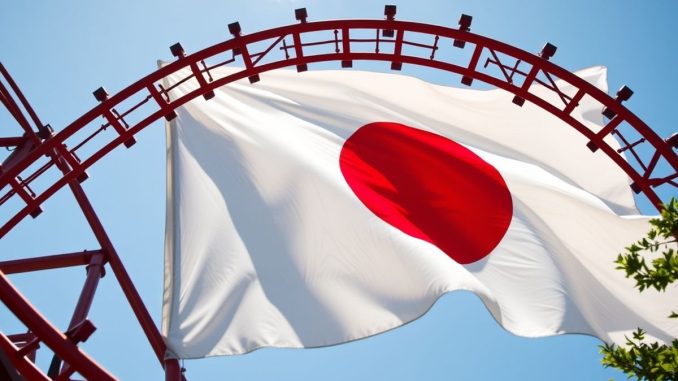
Japan’s stock market experienced a dramatic crash and subsequent recovery this year. The Nikkei 225 saw a significant drop in early August, followed by a rapid rebound, leaving investors puzzled and cautious about future market movements.
Key Takeaways
- The Nikkei 225 dropped 12% on August 5, the largest single-session drop since Black Monday.
- The following day, the index saw its biggest one-day gain since 2008.
- The volatility was driven by changes in monetary policy and the unwinding of the carry trade.
The Crash
In early August, Japan’s stock market experienced a dramatic crash. On August 5, the Nikkei 225, Japan’s benchmark index, plummeted by 12%, marking the largest single-session drop since Black Monday. This decline brought the total drop from its July peak to 27%.
The Recovery
Remarkably, the very next day, the Nikkei 225 enjoyed its biggest one-day gain since 2008. This rapid rebound has continued, with the index inching higher ever since. The sudden recovery has left many investors wondering what caused such extreme volatility.
Factors Behind the Volatility
To understand the factors behind this volatility, we need to look back at the "fear-of-missing-out" (FOMO) days of the pandemic in America. During this period, the Federal Reserve’s aggressive monetary policy injected massive liquidity into the financial system, driving up asset prices. This environment of abundant liquidity and low opportunity cost for risk-taking led to a euphoric market environment.
The Role of the Bank of Japan
Unlike the Federal Reserve, the Bank of Japan did not tighten its monetary policy. Japanese interest rates remained at extremely low levels, even negative at -0.1% until March. This incentivized Japanese investors to move their cash into the stock market, pushing prices higher.
The Carry Trade
Not all the cash stayed in Japan. Some of it flowed overseas via the "carry trade." Investors borrowed money in yen at low rates and invested it in higher-yielding currencies like the U.S. dollar. This created a cycle where the yen depreciated, and the dollar appreciated, benefiting those involved in the carry trade.
The Unwinding
The situation began to reverse when Fed Chair Jerome Powell hinted at a possible rate cut in September, and the Bank of Japan started discussing further rate hikes. This led to a partial unwinding of the carry trade, causing the dollar to drop by about 12% relative to the yen in a short period. The sudden strength in the yen was destabilizing, culminating in the volatility storm of early August.
What Investors Can Do
For most investors, speculating on the yen’s movements is impractical. However, the recent volatility should serve as a wake-up call to review portfolios and ensure an appropriate level of risk. After a strong market run this year, it might be wise to rebalance, reduce risk, and shift some investments into bonds and cash.
Conclusion
Japan’s stock market crash and recovery highlight the interconnectedness of global markets and the impact of monetary policies. While the volatility may be unsettling, it also offers an opportunity for investors to reassess their strategies and make informed decisions.

